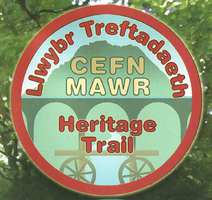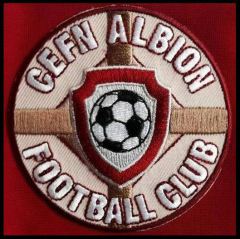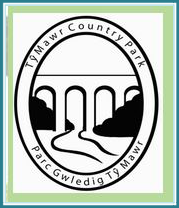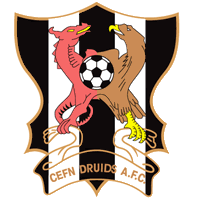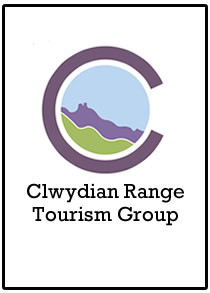Jessop's Tramway, Cefn, Acrefair & Penycae
Introduction
Jessop’s Tramway was a rail road engineered to link the Ellesmere Canal with what became Cefn Mawr, Acrefair, Penycae and Ruabon Brook. It was constructed to bring trade to the canal following unexpected termination at the Trevor Basin. Jessop’s work of 1803 was a combination of previous plans for the canal, but with a rail road and would save the canal from economic disaster and in time brought prosperity to the canal. This is the story of how it came about over 200 years ago and where it lies today both physically and socially in relation to the community of Cefn Mawr 2016.
The Ellesmere Canal
The Ellesmere Canal was planned to cross the River Dee Valley via an aqueduct in 1793 when the Act of Parliament was passed allowing Ellesmere Canal Company to start cutting the canal. Construction of the aqueduct started on the 25th of July 1795 and over the next five years the 19 stone piers of the aqueduct were built form Cefn Sandstone which is a very high quality stone. Then in 1800 the main route of the canal to Chester beyond the Trevor Basin was cancelled, as was the continuation to Shrewsbury from Weston Lullingfields. This change of plans caused major problems for the canal which had to be solved.
- Where was the head water supply going to come from?
- How to make the canal pay?
The planned head water supply for the canal had been from a reservoir in Moss Valley at Hope Mountain in Flintshire, some 20 odd miles further north than the Trevor Basin. This was to be connected to the main line of the Ellesmere Canal by the Ffrwd Canal, but since the canal had been terminated at the Trevor Basin that head water supply was no longer available.
Early Water
Therefore alternative head water had to be sought, and an early limited supply was taken from the Tref-y-nant Brook, near Tower Hill via a weir and culvert that had been used to supply the mill pond of a mill further downstream along the brook, near what is now called the Mill Inn. However this could not deliver the necessary volume of water during the summer months to operate the canal efficiently and Jessop had to look further afield.
The Mill Inn in Cefn Mawr adjacent to Tref-y-nant brook has an interesting history in that William (Merlin) Hazeldine the Iron Master that once owned and operated the Plas Kynaston Iron Foundry lived there while at Cefn Mawr running his foundry. It was this foundry that cast the iron work for the Pontcysyllte Aqueduct and a number of other fine bridges still in use today around the UK.
Main Water Supply
Therefore it was reasoned that a branch to Llangollen would enabled a further feeder line to be cut to Llantysilio where a weir could be constructed, the Horse Shoe Falls, to extract water from the river Dee. At this point the elevation of the River Dee is high enough to provide a head water supply for the canal, as opposed to the one hundred feet below the level of the canal, where the Pontcysyllte Aqueduct crosses the River Dee Valley.
The branch to Llangollen gave access to the Oernant Slate and Trevor Lime Stone Quarries above the Vale of Llangollen via mineral railways linked into the canal at Llangollen and Sun Bank. This also allowed the shipment of coal up the Dee Valley as far as Llangollen by canal from the pits of the Cefn. Coincidentally the transport of coal along the canal leads to the construction of the original Chain Bridge at Llangollen, which was built to avoid expensive toll fees on the road bridge.
Iron Production Per 1790
Before the coming of the canal iron smelting was in progress in the Cefn proving the area for mineral deposits which gives reason to the route of the Ellesmere Canal and why the Pontcysylte Aqueduct is where it is today, other than just to cross the River Dee Valley. The line of the canal to Chester was a question of economics, the cost of which being balanced against the expected returns from the value and tonnage of trade that could be shipped.
The above map shows William Lacon’s forge & blast furnace, weir and culvert take off from the River Dee. The fact that the works are situated next to the River Dee dates the furnace to the mid 1700’s as it uses water power to drive the bellows. Unfortunately this exposes the furnace to the danger of flooding which would not do the process of smelting iron any good at all. It is said that this blast furnace exploded in the end. However the important point about this blast furnace is that it was smelting iron with coke. This rivals the more well known sites such as Iron Bridge & Coalbrookdale. Iron production with coke as opposed to charcoal was at the leading edge of technological development during the latter half of the 1700’s. After all that is what Coalbrookdale became famous for, how about Cefn?
Cefn Minerals
To be able to produce iron three minerals are required, iron ore, limestone and the fuel, in this case coal. The Cefn is fortunate in that it has very rich iron ore called iron stone. Iron stone is a form of iron ore in the order of 60% Fe content where as iron ore is normally only 30% Fe or less with more impurity. Iron stone was and still is a very valuable mineral and signs can still be found in the drainage from past mine workings and aquifer seepage. The sign of iron ore deposit is the reddish brown sediment seen in stream beds from the Fe content separating out as iron oxide.
The coal and iron stone were being mined together in the early pits of the Cefn and Feveral Collieries as referred to by Jessop and are often found in adjacent seams, in and around the Cefn. The limestone was being quarried higher up on the north side of the valley at the Trevor outcrops and across the river at the early Froncysyllte quarries.
This section shows the coal seems and the Great Fault of Cefn.
The quarry at Froncysyllte would later become a major limestone supplier in the area due to the proximity of the Ellesmere Canal and the multiple blast furnaces that would be built on the Cefn Mawr side of the valley following the arrival for the Ellesmere Canal and available access across the Pontcysyllte Aqueduct for export to the UK.
Smelting
Smelting is a process of extractive metallurgy and is used is to produce a metal from its ore.
Iron ore is basically what most people would call rust mixed up with other material. In the smelting process this is purified and cleaned. Iron ores consists of iron and oxygen atoms bonded together in molecules. To convert it to metallic iron it must be smelted or sent through a direct reduction process to remove the oxygen. Iron-oxygen bonds are strong, and to remove the oxygen, a stronger chemical bond must be presented to strip out the oxygen. Carbon is used because the strength of the carbon-oxygen bond is greater than that of the iron-oxygen bond, at high temperatures. Thus, the iron stone / ore is crushed, powdered and mixed with coke, to be burnt in the blast furnace during the smelting process. As most ores are impure, it is often necessary to use flux, such as limestone, to remove the other impurities as slag. In Lacon’s Blast furnace of the latter half of the 1700’s a water wheel powered the bellows and iron stone, coke and lime stone were fed in at the top. Once started this becomes a continuous process with pig iron being tapped off from the hearth of the furnace, and hence the danger of the river and flooding.
Smelting uses heat and a chemical reducing agent to change the oxidation state of the metal ore. The reducing agent is commonly a source of carbon such as coke, or in earlier time’s charcoal. The basic process of iron making is to turn iron ore (ferrous oxide or rust) into iron – Fe2O3 into Fe. Therefore the key to the process is the removal of oxygen from the iron ore while at the same time separating out other impurities. Ferrous Oxide is a chemical compound that can be broken down by heating to a critical temperature in the presence of carbon, which then strips out the oxygen from the iron (Fe) by forming the gases Carbon Monoxide & Dioxide.
Ratios
The ratios for smelting are such that you need a lot more coal than anything else! Coal is partially burnt off on coke beds to remove contaminates such as sulphur and other impurities that would be detrimental to the iron, which again requires more fuel, i.e. coal. Then to produce the required temperatures for the smelting process in the blast furnace and strip out the oxygen from the iron ore, a lot of coke is required in relation to the amount of iron ore and limestone used. So it is a very energy intensive process that requires far more coal as a raw material than anything else.
Since Lacon’s Forge and Blast Furnace had to be situated by the river for water power this meant that the basic materials, coal, iron and lime stone needed to be transported to the works from the pits of the Cefn and Acrefair and the quarries of Trevor and Fron. The pits were approximately 2 miles distant and this would be the route that saw the greatest tonnage due to the large requirement for coal which lead to the construction of an early plate way between Lacon’s Forge & Balst Furnace and the Feveral Collieries.
This map dated 1846 calls Lacon’s Forge, the Old Forge Tenement. By 1846 the forge had been outdated by the newer works in the Cefn and had fallen into disuse. However the map shows the old coke beds and the remains of the plate way track that lead to Lacon’s Forge and Blast Furnace. The plate way was necessary to move the required tonnage of coal to Lacon’s works. These works were instrumental in the construction of the Pontcysyllte Aqueduct, producing the early plate ways for the quarries. The plate ways were necessary to transport the thousands of tons of Cefn Sandstone quarried, cut and dressed in the Freestone Quarries high in the Cefn Ridge to valley floor of the River Dee, for the construction of the 19 piers of the aqueduct, and all pre 1795. The year that construction of the aqueduct began, therefore Lacon’s Forge and Blast Furnace was a leading works in the history of the Cefn.
Plate Ways
Although marked as a railway in this map this is actually a section of Lacon’s Plate Way. The route of Lacon’s plate way can still be followed though Ty Mawr Country Park and Cefn Mawr today and the section shown on this map as a “railway” is actually Bowens Lane. The PKC Group would like to restore this section as a prime example of this early unknown work which rivals that of Coalbrookdale.
Plate ways, although not part of Jessop’s Tramway, had influence on it, and the Cefn had many, no doubt forged at Lacon’s old forge by the River Dee. Plate ways were early railways, rolling stock had wheels without flanges and carts could be run off rails if necessary. They were flexible to use. The construction of the aqueduct between 1795 and 1800 required thousands of tons of stone to be moved from the Freestone Quarries being cut deep into Cape Kynaston or what is better known as the big ridge of Cefn Mawr. It needed to be transported half a mile and almost 300ft downhill to build the 19 stone piers of the aqueduct. This required a simple plate way system to move it.
Plateways were horse drawn, but cable haulage was also used on steep inclines where gravity could provide the motive power and the cargo was intended to go one way, downhill. See construction of the Pontcysyllte Aqueduct for more on the inclined plateways of Cefn Mawr. The plates of the plateway were made of cast iron, often cast by the ironworks that were their users as in the case of Lacon’s Forge by the River Dee.
The “L” shaped rails were supported by stone blocks set in the ground and many of these stone blocks can still be found around Cefn Mawr, some still set in place and others now used in the stone walling of the village. Plate ways were flexible and this was a very useful feature in the quarries when working stone. A gang would work a stone for the aqueduct for maybe a week. Once cut and dressed the stone would then be loaded and packed tightly into a wagon for transport to site. Once loaded the wagons could be marshaled on the track into a train of wagons for haulage, or decent with a break engine on steeper gradients.
Although plateways were useful and flexible they had a number of disadvantages. The wheels were easily blocked by stones and other material accumulating because of the rail design which could cause derailment of the wagons. The strength of this type rail is also far less than that the present day railway lines simply because of the design geometry.
New Technology
Jessop’s Tramway ushered in a new technology when it was built. The tramway was literally built on different lines to the former plateways. This new technology was what was then called an “Edge Way” type rail and very similar to what we have today on our modern railways. Here the guiding flange for the wheel is a part of the wheel rather than the rail and this not only overcomes the disadvantage of the former plate ways with “L” shaped rails it offers a number of new and distinct advantages. The rail design is a lot stronger allowing it to carry far more weight simply by geometrical design and the rolling friction is reduced, allowing more goods to be hauled or higher speeds to be attained for the same given power.
The edge rail, was first used by William Jessop on a line which was opened as part of the Charnwood Forest Canal between Loughborough and Nanpantan in Leicestershire in 1789. The cast-iron "edge rails," were raised above the ground to allow a flanged cast-iron wheel to run on them and appears to have been the first system of rails to be laid on cast-iron chairs and sleepers. The rails were pinned or bolted into the chairs which were fixed to the sleepers much as in today on modern railways.
What Jessop’s tramway may have looked like with a team of horses drawing a train of wagons along the new edge rails set in chairs on timber sleepers. This system allowed for more haulage and longer distances to be covered with less effort. In the case of the Cefn, the plate ways remained but were limited in length, however Jessop’s Tramway as proposed and built ran from the Aqueduct to Ruabon Brook near where Penycae is today with a length of nearly six miles.
The Crane & Containerisation
It is said locally that there was a crane at the Crane in Cefn Mawr and that is where the name of the area comes from. Some speculation includes the suggestion that it was used to transfer loads from one railway to another or from the railway to the canal.
The idea that a crane could transfer a load from the Crane to even the Plas Kynaston Canal is totally impossible due to the length of reach required and the available technology of the time. The reason for transferring loads from one railway to another has not been defined until now in this document, but the simple reason for this is the different types of rail used. Loads were brought to the crane on the mineral quarry plate ways with the “L” shaped tracks and the transferred to the bogies on the “I” shaped tracks.
This switching of loads between systems also displays one of the earliest forms of Containerization. The body of the wagon would be lifted off the plateway bogie and loaded on to the tramway (Jessop’s) bogie at the Crane. Hence the folk law of a crane at the Crane moving loads between railways is actually correct and necessitated by the different types of running rails used.
The PKC Group believes this concept of moving the wagon bodies between bogies and inclined railways may well have been developed during the construction of the Pontcysyllte Aqueduct. This would have been a very practical way of moving the cut and dressed stone from the quarries high on the Cefn hill to the valley floor for construction of the 19 stone piers of the aqueduct and continues to form another avenue of research for the PKC group.
Economic Viability
The canal had to be made to pay. It was a commercial enterprise and the whole objective of the canal was to increase trade by providing a modern transport system. So the biggest question was how to link local trade into the canal and make it pay, and so William Jessop, Thomas Telford’s boss and Superintendant for the construction of the Ellesmere Canal drew up his plans.
To make the canal pay Jessop proposed his Rail Road. This would link in areas where the real money could be made at that time, much as today. It was not in stone and aggregate, it was in the energy expensive commodities such as coal, iron and other metallic minerals such as zinc, copper and lead. These were prize cargos and where the canal could be operated on a commercially viable basis providing a return for the Share Holders.
In the present day the PKC Group now propose to reopen Jessop’s Tramway as the first step in the reunification of Cefn Mawr with the aqueduct after years of separation by the ex-Monsanto Chemical Works that have now closed and been demolished. What is now the Llangollen Canal is one of the UK’s busiest canals and the tourist count for the Pontcysyllte Aqueduct is in excess of 200,000 annually while the Village of Cefn Mawr goes virtually unnoticed and struggles to survive. The PKC Group intend to reopen Jessop’s Tramway once again to provide economic viability, so it is quite literally “Back to the Future For Cefn Mawr”.
The Route
The route of Jessop’s Tramway follows some of what would have been the line of the Ellesmere Canal if it continued to Chester as originally planned in 1796.
The planned route of the Ellesmere Canal passing through Cefn Common, on an elevation similar to that of Crane Street today is shown above. To raise the level of the canal from that of the aqueduct, a rise of approximately 100feet would require a series or flight of locks. However since locks use a lot of water, this lead to local speculation for a more efficient option to conserve the head water supply. At that time in 1796 the supply was to come from to the reservoir in Moss Valley 20 miles further north as this was the summit route. This need, the mother of all invention, lead to possibly the world’s first experimental boat lift being constructed and trialled in the Cefn, in the years preceding cancelation of the canal continuing to Chester in 1800!
The proposed Acrefair Branch is also shown showing the importance of the Feveral Collieries at that time. This gives the first sign of the classic hairpin bend caused by following the local topography which Jessop’s Tramway would follow some 10 years later leading to what became known as the Crane in Cefn Mawr where the track double backed along the line of what would have been the Acrefair branch.
Jessop’s Tramway overlaid in yellow on a present day aerial photograph of Cefn Mawr extending from the Trevor Basin through the ex Monsanto Chemical Works to the Crane and then doubling back around the classic hair pin bend and along King Street before deviating off through the ex Air Products works on route to Penycae. The blue lines show the planned route of the Ellesmere Canal and Acrefair Branch in 1796.
The present proposal by the PKC Group is to reopen the section running through the ex Monsanto site (300mts) to re unite Cefn Mawr and the aqueduct.
The Crane in Cefn Mawr and the classic hair pin bend which can still be quite clearly seen today. Also note the other names in the area, The Railway, Railway Cottages all indicating association with the past. We believe the Minshalls Croft was one of several inclined railway used to lower stone for the construction of the Pontcysyllte Aqueduct.
The route of Jessop’s Tramway as planned in 1803, note North is to the bottom of the map.
The same route as overlaid on a modern Ordnance Survey Map from Acrefair to Penycae.
The Ruabon Brook Tramway
The Ruabon Brook Tramway or Jessop’s Tramway was a Welsh branch railway line linking the Ruabon coalfield to the Ellesmere Canal at Pontcysyllte. The first section of the tramway was opened on 26th November 1805 between Pontcysyllte and Acrefair. Then the line was extended from Acrefair to the Plas Madoc Colliery in Plasbennion, and in 1808 the line advanced to its summit at Wynn Hall with level crossings at Plas Bennion and Penycae similar to this one at Rhos on the same line.
From 1860 the line was converted from a tramway to a railway, frequently referred to as the Pontcysyllte Branch, with an extension to Rhosllannerchrugog opening on 30 Jan 1867; it continued as the Rhos Branch via Legacy and Rhostyllen and eventually joined the main line slightly South of Croes Newydd junction. Although the line was intended for goods services, the section between Wynn Hall and Rhosllannerchrugog had a railmotor service for passengers between 1905 and 1915, with connections to Wrexham and beyond. The section between Pontcysyllte and Pant closed in 1953 and was torn up as far as the bridge over the Afon Eitha or Ruabon Brook in the late 1950s. The following section from Pant towards Wrexham closed in 1963.
Monsanto's private track remained in use until 1968, for transporting large volumes of chemicals until the remains of the Ruabon to Barmouth Line closed to goods and the line was lost.
Wynn Hall
Wynn Hall is a 17th century house in the old hamlet of Bodylltyn standing at the junction of the Penycae Road and Plas Bennion Road. It was built by Captain William Wynn in about 1649 – the year of the beheading of Charles I. During the English Civil War Captain Wynne supported Oliver Cromwell and was a prisoner of war in Denbigh Castle in 1646. Wynn was one of the commissioners named in the 1650 Act for Propagating the Gospel in Wales. During the 17th and 18th centuries the family was connected with the development of the nonconformist cause in the Wrexham area.
He died in 1692 and was buried in the Dissenters' Graveyard in Rhosddu, Wrexham. After his death, Wynn Hall went to his brother John Wynn, and later to his niece Sarah Hamilton. In 1722 Sarah, married the Rev. John Kenrick (1683–1745), minister of Chester Street Presbyterian Chapel, Wrexham which placed the house in the hands of the Kenrick family for over two centuries.
Wynn Hall Colliery was opened by William Kenrick (1798–1865), the grandson of John Kenrick, and consisted of two pits, the 'Foundry Pit' and the 'Rock Pit'. Both pits were "drowned out" in 1846, severely affecting coal production. The Kenricks also owned a Spelter works at nearby Copperas.
Wyn Hall at the junction of the Penycae Road and Plas Bennion Road today.
William's brother Archibald Kenrick was grandfather of Harriet and Florence Kenrick (cousins), the first and second wives of the British politician Joseph Chamberlain, and therefore also ancestor of the British Prime Minister Neville Chamberlain and Sir Austen Chamberlain. Florence Kenrick's sister Louisa was the wife of Joseph Chamblerlain's brother Arthur - they were grandparents of the author Elizabeth Longford and great grandparents of the Labour politician Harriet Harman. The connection between the Kenricks and Wynn Hall ended in 1970 when the remaining members of the family sold the estate and immigrated to Australia.
For a short period of time Wynn Hall had its own halt on the railway line which ran between Rhosllanerchrugog and the canal wharf at Pontcysyllte. Although this was primarily an industrial line, a rail motor service ran between Rhos and Wynn Hall Halt.
What is now known as Penycae and the Wynne Hall Spelter Works at Ruabon Brook, this was where Jessop’s Tramway terminated and the sidings can be clearly seen on this Ordnance Survey publication of 1879.
Penycae
The oldest part of the village is called Pentre Cristionydd where three bridges near to each other cross the River Eitha (Ruabon Brook). Coal was extracted from pits at Plas Bennion, Wynn Hall, Afon Eitha, Cristionydd, Groes and Plas Isaf and zinc was worked at Copperas.
In the latter half of the 1700’s the age of Iron was starting in Wales and in 1760, an Iron Furnace built in Copperas sold in 1765 for £6050. Two names are associated - John Wilkinson and Thomas Williams, pig iron was produced and the works continued until 1840.
It is interesting to note that the meaning' of Copperas is "Green Vitriol, or Sulphate of Iron". The name Copperas therefore proves that it was of sufficient importance to name a place after the industry, which was once so important.
Copperas
Ferrous Sulphate or iron(II) sulphate is most commonly encountered as the blue-green hepta hydrate, known since ancient times as copperas or green vitriol. Ferrous sulphate can be found in various states of hydration, and several of these forms exist in nature. Ferrous sulphate was used in the manufacture of inks, most notably iron gall ink, which was used from the Middle Ages until the end of the 18th century
Ferrous sulphate hepta hydrate is generally the starting-point in the preparation of iron pigments. When pure, it forms fine sea-green crystals. In the 18th century two different methods for the direct application of indigo dye were developed in England and remained in use well into the 19th century. One of these, known as china blue, involved iron(II) sulphate. After printing an insoluble form of indigo onto the fabric, the indigo was reduced to leuco-indigo in a sequence of baths of ferrous sulphate (with reoxidation to indigo in air between immersions). The china blue process could make sharp designs, but it could not produce the dark hues of other methods.
Spelter and ZINC
Spelter, while sometimes used merely as a synonym for zinc, is often used to identify a zinc alloy. In this sense it might be an alloy of equal parts copper and zinc, i.e. a brass, used for hard soldering and brazing, or as an alloy, containing lead, that is used instead of bronze. In this usage it was common for many 19th-century cheap, cast articles such as candlesticks and clock cases and early 20th-century Art Nouveau ornaments and Art Deco figures.
Zinc is a chemical element with symbol Zn and atomic number 30. It is in the first element of group 12 of the periodic table. The largest mineable amounts are to be found in Australia, Asia, and the United States. The element was probably named by alchemist Paracelsus using the German word Zinke and German chemist Andreas Sigismund Marggraf is credited with discovering pure metallic zinc in 1746.
Work by Luigi Galvani and Alessandro Volta uncovered the electrochemical properties of zinc by 1800, leading to corrosion-resistant zinc plating of iron (hot-dip galvanizing) as the major application for zinc and other applications such as batteries, small non-structural castings, and alloys, such as brass which is a mixture of copper and zinc. The element is normally found in association with other base metals such as copper and lead.
The presence of these three metals, Zinc, Copper and Lead coupled with coal and pig iron production was what lead to Jessop’s plan for his tramway all the way to Penycae and Ruabon Brook way back in 1803, after all they were and still are valuable materials, and the canal had to be made to pay.
Other Names
Jessop’s Tramway has been known by other names such as Ruabon Brook Tramway, Pontcysyllte Branch, Ellesmere Canal Tramway, Canal Company Tramway, and for the short section between the Crane in Cefn Mawr and the Aqueduct, Oily Works Road, Middle Road, Road 1 and Railway Road.
An historical account of this little known tramway by William Jessop at Cefn Mawr that turned the fortunes of the Ellesmere Canal around from economic disaster
Jessop's Tramnway, Cefn, Acrefair Penyc[...]
Adobe Acrobat document [4.2 MB]
References
Tramway Engineering, by Nicholas Wood (1795-1865)
Tramway Engineering, by Thomas Tredgold (1788-1829)
William Jessop by Charles Hadfield & Sir Alec Skepton ISBN -10: 0715376039
http://mysite.du.edu/~jcalvert/railway/woodtred.htm
http://www.cyclopaedia.info/wiki/Plateway
http://www.1902encyclopedia.com/R/RAI/railway-01.html
http://newbold.g-forbes.co.uk/page22.html
http://gr5619.wix.com/wrexham-history-1#!rhos/c1ww
http://gr5619.wix.com/wrexham-history-1#!wynn-hall/c7ju


